Metal Gear Solid: Peace Walker is an upcoming video game currently in development by Kojima Productions and is slated to be released for the PlayStation Portable in 2010. Peace Walker will be the first Metal Gear title for a portable platform directed by series’ creator Hideo Kojima. The story will take place following the events of Metal Gear Solid 3: Snake Eater and Metal Gear Solid: Portable Ops, which were both prequels to the original Metal Gear, and will once again star Naked Snake.
If you’ve already played the demo for Metal Gear Solid: Peace Walker, you should have an idea of what to expect from the controls, but there is so much more to the game that you could easily spend dozens of hours trying to complete everything. For those of you who haven’t played the demo yet, which was the tutorial and first mission of the game, you can catch up on all the details in our previous preview here. While the core game is tactical espionage (or action, depending on how you want to approach things), we also learned–during our two-day play session with Konami–that there are some role-playing game and strategy elements thrown in to keep you occupied between missions.
The story starts off in Colombia, where Snake is in charge of a group of mercenaries called Militaires Sans Frontieres (Solders without borders). After a quick tutorial on how to perform close-quarters combat and other basic-but-essential functions, you meet up with a professor of peace studies, Ramon Galvez Mena. Ramon tells you about a military force armed with all the latest weaponry that’s operating in Costa Rica, a country without an official army. There’s obviously something shady going on, and Snake is hesitant to help at first. However, after meeting Paz, a teenager who had been tortured by this group but managed to escape with a cassette tape that has some intriguing information on it, he agrees to do it for her.
Like Metal Gear Solid: Portable Ops, all the story sequences in the game are voice acted and told through comic-book-style cutscenes. The gritty black-and-white art style is a nice alternative to 3D cutscenes, with a dash of color to make things pop or to highlight an important feature in a scene. We won’t give away any plot details, but there will be interactive cutscenes later on in between your missions. It initially caught us off guard because we expected to sit back and watch some lengthy series-defining cutscenes (which still can’t be paused; they’re still long), but the indicators are in bright red letters so it’s pretty hard to miss once you realize you’re supposed to be doing something. During some of these cutscenes, there’s a mix of quick-time events, as well as some shooting and the ability to move the camera around. You’re given a score at the end of the mission so you can see what you missed.
Other than the tutorial, all the missions that we came across can be played with one other person locally. The exception is boss fights, where you can have up to three others help you out. It’s obvious that the focus is very much on cooperative play because going through the missions alone can be tough, and we weren’t given any options to adjust the difficulty setting either. Boss fights are particularly brutal, but with a partner, it’s definitely manageable, as well as a lot more fun and engaging. If one person happens to fall, you can walk over and resuscitate him or her by pressing up on the D pad. Another added benefit is that if you’re running low on health, your partner can run by and share his or her hit points to give you a boost. Teamwork is definitely needed if you want to get through these missions with the least amount of trouble, and like most games, it’s always more entertaining with a friend.
In between missions, you have the option to return to the mother base, which is a hub that acts as your base of operations and can be expanded as you progress through the game. It’s interesting that in Peace Walker you not only spend a good amount of time sneaking around the humid jungles of Costa Rica, but you also spend quite a bit of time recruiting new blood from just about anywhere to join your team to manage them strategically later. By using the Fulton recovery system while you’re out on your mission, you can tie a balloon to a prisoner or even an unconscious enemy, and he or she will be picked up by a helicopter to be returned to your base. This is vital for expanding your team because you will need these new members to help you with the research and development of new weapons, items, or outer ops missions.
New staff members can be assigned (or auto-assigned based on abilities) to sections of your base. For example, those who have an affinity for cooking should be sent to the mess hall to ensure that everyone is well fed. A food percentage is displayed at the top corner of your screen to indicate the level of morale. Anything over 100 means that things should be running smoothly and your members should be performing beyond their natural abilities. However, if the number falls under 100, people will start underperforming and some may end up defecting. Assigning people to the intel team will affect your supply drops when you’re out in the field, and before you head out, you’ll get the scoop on whether there are prisoners to be rescued in the area. A solid medical staff will ensure that illness doesn’t break out and that soldiers wounded from battle will heal much faster. Apparently, a good medical team will help you develop higher ranked tranquilizer guns. Research and development is also critical if you want to build up your arsenal. Thus, the more people you have working on R & D, the faster you’ll be able to upgrade weapons and items. It all costs money (GMP) though, which is where the outer ops missions come into the game.
There will be people you recruit who aren’t fit for the medical team or the kitchen, so they’ll wind up in the combat unit. These men and women can be shipped off, along with armored tanks or helicopters that you acquire after boss battles, to fight in outer ops missions (once they’re unlocked) while you continue along in the main story. You’re given a list of random missions and can see what kind of opponent you’re facing. You can assign several teams and dispatch them all at once if you have the resources. These outer ops missions occur in the background and don’t affect the story, so by the time you’re back from whatever mission you’re on, the results should be in so that you can check to see if you’ve lost any members. There’s an option to play back what happened, which is just a text log of the turn-based battle that occurred between your staff and the opposition. The purpose of these missions is to earn more GMP, bring back new weapons or design documents, and put your team to work. If you didn’t put your team to work, it would just take up space on your base and eat all the food.
As you unlock new features in the game, they will appear in the menu at the mother base, so eventually you’ll be able to build your own metal gear with AI parts that you collect, send or receive gift packages via ad hoc, trade staff members with friends, and take on additional recruiting missions by accessing wireless LAN access points. Not everyone you recruit will be the best of the best, and sometimes people will get hostile or need a time-out on the brig. It’s always a good idea to continuously recruit, and you might as well as you play through the missions if you don’t intend on killing everyone you come across anyway. What’s nice is that when you play cooperatively, both players get all the new recruits regardless of who uses the Fulton recovery system.
Versus mode is also available via the mother base, which supports up to six players and includes four modes. These are Deathmatch, Team Deathmatch, Capture Mission, and Base Mission. In Capture Mission, your goal is to snag the quetzal, a brightly colored bird, and bring it back to your base to guard it until the timer runs out. Base Mission is a mode where you are trying to occupy the most bases on the map before time runs out. Other than the fact that the PSP isn’t the most comfortable system to play a shooter on, it was fun to play Team Deathmatch on the Costa Rica maps because you blend in with the environment or can hide in boxes until your opponents appear. It’s a different dynamic than running around and gunning down the first person you see in an open area. If or when your teammate dies, you have 10 seconds to try to revive him or her by pushing up on the D pad. The person on the ground can also lend a hand and shorten the time it takes to get up by pressing up.
It’s hard to run out of things to do because there are plenty of optional missions to check out, and you can replay missions if you want to level your weapons. Each time you use a weapon, you’ll gain experience, so if you find that some of the missions are just too difficult, you can go back and play a few of the easy missions to beef up the items in your inventory. There’s actually quite a bit to manage if you really want to expand your base, recruit more soldiers, level your weapons, and proceed through the story. As you progress, you’ll accumulate some random items, like a cardboard box tank that is called “combat ready love box,” where the first player drives the tank and the second player is the gunner–another reason why cooperative play is encouraged.
It’s impressive how much content there is in Metal Gear Solid: Peace Walker, and while you certainly can just run through the game from beginning to end, there are so many things to do on the side to keep you busy for hours on end. For those who don’t have someone to pair up with or prefer to play solo, Peace Walker might be more of a challenge because the game emphasizes and is built for cooperative play. The option to grind and level your weapons is there, though, so that if you are on your own, you can always prepare for the next fight by spending the time needed to get ready. By taking your time, you can also come across Easter eggs, like recruiting Hideo Kojima to join your cause.
We enjoyed our time with Peace Walker, and the amount of content that is packed into this portable game was impressive. Missions can take a while to complete and can be quite intense, so the game may be hard to put down if you’re on the go. But if you’ve got a friend or two that is willing to sit next to you, then it’s an entirely different and better experience. Be sure to look for our review of the game when it is released June 8 exclusively on the PSP.
Source: Gamespot

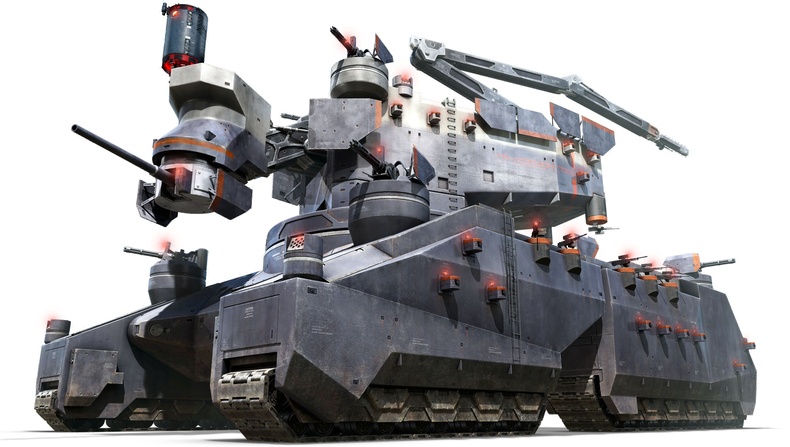
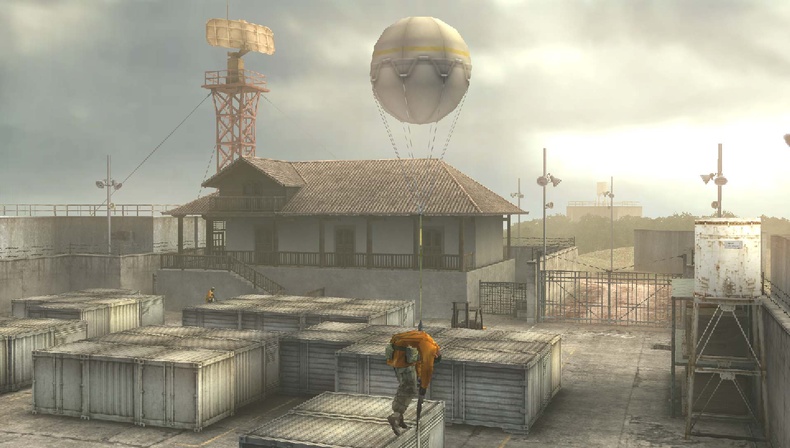
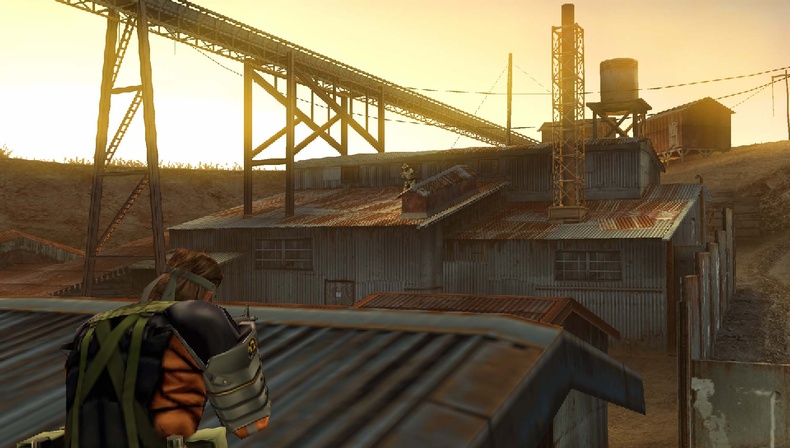
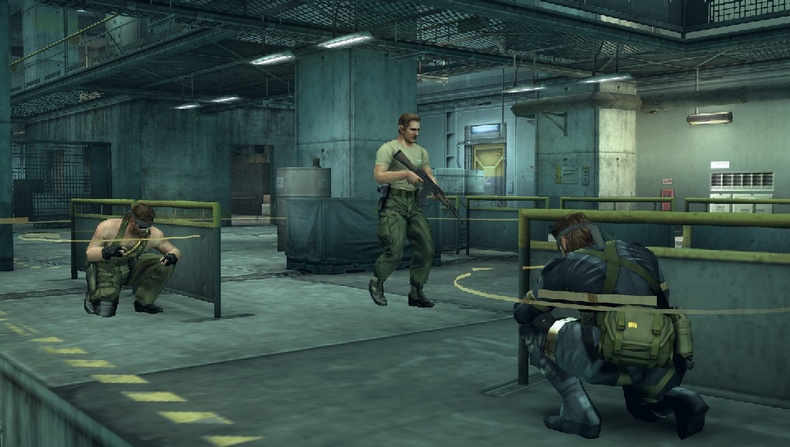
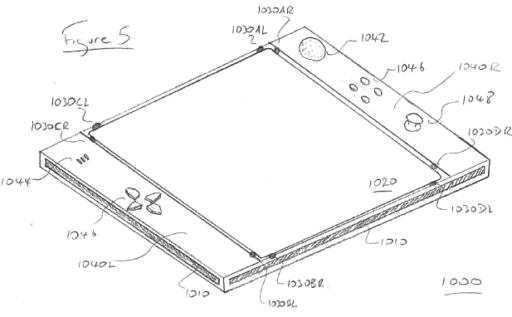
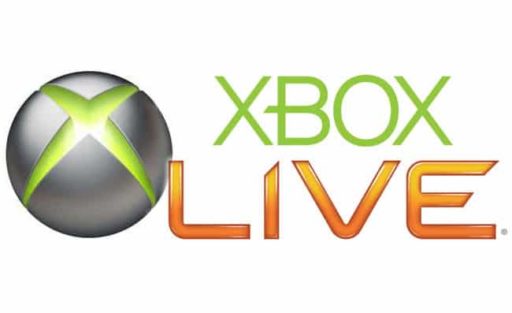
Pingback: Tweets that mention Metal Gear Solid: Peace Walker Hands-On | TheTechJournal.com -:- Technological News Portal -- Topsy.com